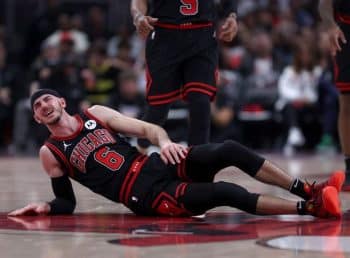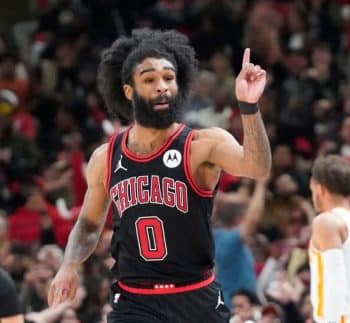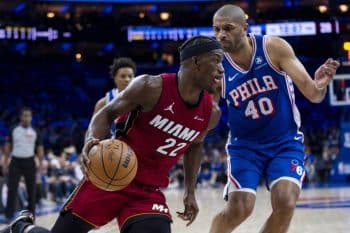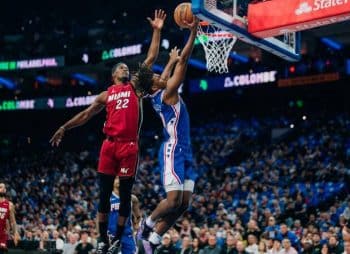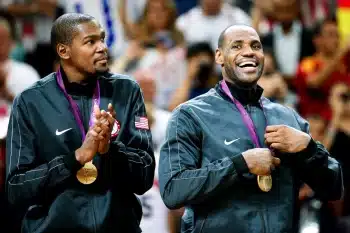NBA
NBA Sunday: The Pacers Might Be A Problem

During last month’s draft, between the Boston Celtics desperately trying to unload their third overall pick and experts trying to predict where Skal Labissiere would fall, somehow, we overlooked the Indiana Pacers dramatically upgrading their point guard position by turning George Hill into Jeff Teague.
Somehow, we missed the Pacers turning the 20th pick in the draft into the versatile Thaddeus Young and, due to the Kevin Durant sweepstakes, overlooked the signing of Al Jefferson. Jefferson, who will turn 32 years old in January, has probably seen better days, but even still, when healthy, he is still a tremendous low post presence.
With newly installed head coach Nate McMillan calling the shots for the Pacers, there are a bevy of unknowns in Indianapolis.
But even still, it’s difficult to imagine them not reemerging as a power in the Eastern Conference.
* * * * * *
Seeing an opportunity to make a defensive play in an utterly meaningless game, with his sights set on James Harden, Paul George measured his steps and rose into the air. By the time gravity would take its course, on August 1, 2014, everything changed.
The Pacers were coming off of back-to-back appearances in the Eastern Conference Finals and seemed to be the only team that could rightfully call itself a peer of the LeBron James-led Miami HEAT. With a defensive-first attitude and career-best production from Lance Stephenson and Roy Hibbert, Paul George rose up from being simply a player with a funny haircut to one of the league’s best all-around contributors.
Today, we have no concept of history. It’s all about what someone has done for you lately and about what they showed you last week. But if you go back and watch the tape and listen to the commentary on and praise of Paul George, you will quickly be reminded that there was no player in the entire league that had his combination of size, length, on-ball defensive instincts, shooting ability and athleticism.
As he laid on his back during the pre-FIBA World Cup Team USA Exhibition in the Thomas & Mack Center in Las Vegas, George and his parents wondered whether his career was over while the basketball-viewing public knew it was.
Miraculously, despite being ruled out for the entire 2014-15 season, George beat the odds by beginning to practice with his team in February of 2015. This was a miracle considering the compound fracture he suffered in his lower right leg. George ended up playing the final six games of a 2014-15 season that saw the Pacers miss the playoffs for the first time since he entered the league.
By the time the 2015-16 season began, George had long been cleared to resume basketball activities without any restrictions. By the time he did so, most of his running mates—Lance Stephenson, Roy Hibbert and David West among them—were gone. He was surrounded by new faces and suddenly saw his Pacers in the lower echelon of an Eastern Conference that had suddenly become more competitive.
George responded to that how any truly great player would: he excelled.
During the 2015-16 season, George appeared in 81 games. The lone game he missed was the final game of the regular season and it was because head coach Frank Vogel opted to rest four of his starters since the Pacers were locked into the conference’s seventh seed.
The Pacers would last all of seven games before succumbing to the second-seed Toronto Raptors, but in their first round playoff series, George was magnificent. He dominated the series on both ends of the floor and was clearly the best and most consistent player over its duration. During the series, his per-game averages of 27.3 points, 7.6 rebounds 4.3 assists and two steals easily tell the story of what he contributed.
In the end, he simply didn’t have enough help.
During the regular season, George essentially picked back up right where he left off. As compared with his output during the 2013-14 season, George was superior in a number of areas, including scoring a career-high 23.1 points per game, and accomplishing it while playing the least minutes he averaged since his sophomore year. His shooting percentages were consistent with his career output. He scored 35 points or more on seven occasions and 45 or more twice.
In short, after a one-year hiatus, Paul George had reverted to Paul George. And that’s something that the entire Eastern Conference needs to take note of.
* * * * * *
It’s October 28, 2015. George stands at center court of the Air Canada Center and greets Kyle Lowry and DeMar DeRozan. They exchange pleasantries as a great many of the Raptors players welcome George back and wish him the best of luck.
With George Hill, C.J. Miles, Monta Ellis and Ian Mahinmi flanking him, George struggles a bit. In the end, after suffering a 106-99 loss at the hands of the Raptors, George recognizes that his 12 rebounds and eight assists were good output, but his 4-for-17 shooting from the field simply wouldn’t get it done.
As the season wore on, George became stronger, but the same couldn’t be said of his supporting cast.
Now, as the 2016-17 commences, the 30-year-old Hill has been replaced by the 28-year-old Jeff Teague while Mahinmi’s place in the rotation will be taken by new additions Al Jefferson and Thaddeus Young. The sophomore Myles Turner truly hit the ground running during his rookie year and will eventually be a starter in the NBA for many years to come.
With McMillan replacing Frank Vogel on the bench, his responsibility will be to find a way to put the pieces together. But judging by the way McMillan handled the revolving door of players he coached with the Portland Trail Blazers, the head coach should have little difficulty with finding a way to put these pieces together.
In Teague, McMillan has a point guard who has played an integral role in his team’s reaching the playoffs in each year of his seven-year career, while Young has long been one of the more underrated two-way, combo forwards in the league. With Young and George in the lineup, the Pacers perimeter defense will be top-notch.
In Ellis, the Pacers will have a proven score and a player who doesn’t get the credit he deserves for seeing the floor as well as he does, and in Jefferson, the team will have an interior presence who has made a living for himself by attracting double teams and attention in the low post.
With Myles Turner, C.J. Miles, Rodney Stuckey and Lavoy Allen, it’s difficult seeing how this experiment in Indianapolis will fail. It’s especially difficult considering that Paul George just recently celebrated his 26th birthday and is nowhere near his physical prime. History tells us that George will improve upon his 2015-16 season, and with the pieces that have been put around him, again, that’s something the entire conference should recognize; and perhaps shudder at.
* * * * * *
As the offseason continues, even as we enter and pass mid-July, there are still a number of impact free agents on the market. As of July 17, the Pacers have $12 million available under the cap and could have the $2.8 million room exception as their disposal. Next summer, depending on whether Rodney Stuckey and C.J. Miles opt out of their contracts (they will, in all likelihood), the Pacers could have as much as $50 million available under the cap.
With sensible contracts on their books, a fairly young nucleus augmented by productive veterans and the progressing Paul George, a bright season and a bright, bright future may lie ahead for the Pacers.
Indeed, since Paul George laid on his back in Las Vegas’ Thomas & Mack Center just about two years ago, things have changed dramatically.
The Indiana Pacers will prove in short order, though—change is sometimes for the best.

